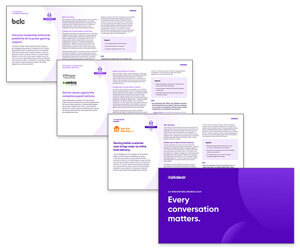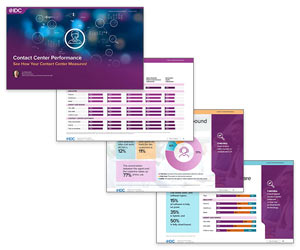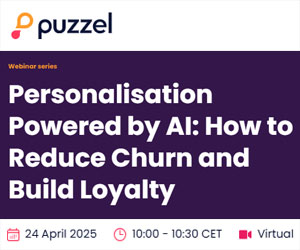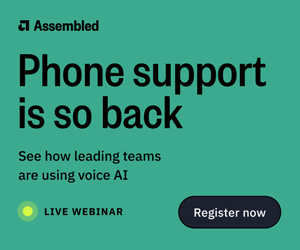Patty Hayward at Talkdesk explores how AI-powered solutions are transforming patient experiences by enabling more efficient, personalized, and human-like interactions, which are essential for the success of value-based care in healthcare.
Value-based care is far from a new concept in healthcare, but “value” for the people at the heart of healthcare – patients and their families – means something different than risk-based contracting and encouraging preventive care.
It means access. It means engagement. It means feeling connected to their care team and empowered to take control of their health.
Would you keep going back to a restaurant with terrible service, even if the food was technically good? Probably not. The same goes for healthcare.
Patients who feel valued, heard, and respected are more likely to stick with their treatment plan – the very things that drive value-based care.
Poor patient experiences – whether long wait times, complex processes, or inefficient communication – impact trust and loyalty and lead to disengagement or patients seeking care elsewhere.
Unfortunately, many healthcare systems are struggling to consistently deliver the positive experiences patients expect and deserve.
Long wait times to schedule an appointment that leads to frustration, complex processes that overwhelm, and a reactive service that leaves patients feeling unheard.
AI has become healthcare’s (and the world’s) biggest buzzword. But we are starting to see real examples of how it helps healthcare overcome these challenges and create an experience that is both efficient and deeply human.
AI-powered tools complement human interaction, offering support and insights that improve empathy and understanding of the patient’s issue.
They also create major efficiencies for providers and payers, with some of our health system customers seeing over 50% of patient calls being fully automated by AI.
Additionally, advances in the area of agentic AI – systems that can do more than generate words and actually take instructions and accomplish tasks – are poised to further transform consumer experiences everywhere, including healthcare.
Autonomous, Conversational Self-Service
Contrary to popular assumption, patients’ desire for AI-supported interactions is substantial and growing. Our own research, backed by Pollfish data, shows that many people are open to interacting with AI agents to meet healthcare needs.
Why? Convenience is a big factor, but it goes deeper than that. AI can offer a safe, nonjudgmental space to discuss sensitive health concerns, which can be incredibly valuable for patients who might feel uncomfortable sharing certain information with a human.
AI agents powering autonomous and conversational self-service offer a better solution than previously possible for delivering the convenience and depth patients want from AI systems.
Instead of automated responses and pre-programmed scripts, healthcare organizations can use AI agents to engage in natural, human-like conversations with patients, as they can do so much more than answer FAQs and handle routine administrative requests.
AI agents can handle complex, nuanced conversations that adapt to the individual needs of each patient.
For example, if a patient calls to schedule an appointment and the AI agent asks for their date of birth, the patient might reasonably ask, “Why do you need that?” instead of giving it.
We have all been through enough automated phone trees where this kind of input disrupts the conversation flow, leading to an “I’m sorry, I didn’t understand” from a system designed to only accept a date at that stage of the interaction.
But an AI agent understands and adapts. It can explain the reason behind the request, reassure the patient about data privacy based on the organization’s defined policies, and smoothly continue the interaction.
This ability to handle unexpected twists and turns in a conversation is one of many things that sets AI agents apart. They can provide personalized support and answer questions in context to build trust with patients.
Their availability 24/7 across channels and in any language also means no more waiting on hold for Spanish language support, or limited hours of operation.
AI agents can provide continuous support, freeing human agents to focus on complex issues and value-driven tasks that require their expertise and ensuring that patients receive timely care.
AI for Every Healthcare Contact Centre
Agentic AI is not exclusive to healthcare giants. We’re making it accessible to every healthcare contact centre, regardless of deployment – on-premises or in the cloud – and with substantially lower technical requirements to set up, through simplified workflow development and pre-built EHR integrations.
Previously, automating a simple task, such as resetting a patient’s password, required meticulous planning, extensive configuration, testing, manual effort, and a team of expensive data scientists.
Today, with a simple prompt like the one below, AI agents design an AI virtual agent with the tools to integrate with existing systems and deploy it to handle those once-complex interactions easily.
Here’s how the password reset prompt might look:
“You are a technical service assistant at Example Care. You help patients reset their portal passwords after they have verified their email address, date of birth, and patient ID number.
Call the EHR to request a reset only after verifying the patient’s identity. Stay professional, cheerful, and never give medical advice of any kind, directing emergencies to hang up and dial 911.
Maintain HIPAA compliance at all times and do not access or disclose any information about patients. Transfer the patient to a live agent if they become upset or are unable to authenticate their identity.”
This shift moves the focus from technical implementation to business operations. Instead of struggling with code to design an end-to-end decision tree, healthcare providers define desired outcomes, such as improved patient access or reduced administrative burden.
The challenge is no longer building the workflow but clearly articulating what problems are being solved and goals to be achieved. AI becomes the tool to reach those objectives, simplifying adoption and ensuring alignment with the mission.
Hyper-Personalized Patient Journeys
Patients expect more than generic interactions when they reach out to their healthcare provider. They want to feel known and understood, regardless of whether they’re scheduling an appointment over the phone, chatting online, or receiving text updates. Meeting this demand requires a connected, seamless experience across all communication channels.
AI agents move hyper-personalization from concept to real-life application, guiding patients toward better outcomes without feeling intrusive.
For example, by integrating with EHR systems, provider AI agents can instantly access patient data to offer insights in real time. If a patient calls to book an appointment, the system seamlessly reminds them they’re also overdue for a flu shot.
Previously, healthcare contact centres have been all about cost containment – answer as many calls as possible, as efficiently as you can. AI agents deliver efficiency but don’t sacrifice the intelligence and personalization that are critical to helping patients stay connected to their care in a value-based world.
AI agents do more than send reminders. They tailor every interaction, adapting to the patient’s preferred language, addressing their unique needs, and anticipating their next step.
Hyper-personalization in healthcare means crafting experiences that don’t just respond but anticipate, helping patients feel seen and supported every time they engage with their health system, not just during in-person visits.
Healthcare providers can’t continue down the path of reactive, transactional care. Agentic AI creates value-driven experiences where staff and automated systems are all working together to drive outcomes for the patient and the organization.
Are you ready to unlock the power of AI agents in your healthcare organization?
This blog post has been re-published by kind permission of Talkdesk – View the Original Article
For more information about Talkdesk - visit the Talkdesk Website
Call Centre Helper is not responsible for the content of these guest blog posts. The opinions expressed in this article are those of the author, and do not necessarily reflect those of Call Centre Helper.
Author: Talkdesk
Reviewed by: Jo Robinson
Published On: 1st Apr 2025
Read more about - Guest Blogs, Talkdesk




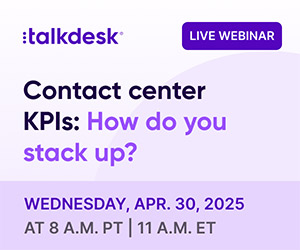

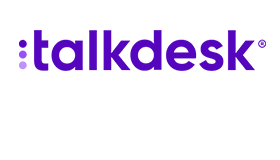 Talkdesk is a global customer experience leader for customer-obsessed companies. Our contact center solution provides a better way for businesses and customers to engage with one another.
Talkdesk is a global customer experience leader for customer-obsessed companies. Our contact center solution provides a better way for businesses and customers to engage with one another. 




